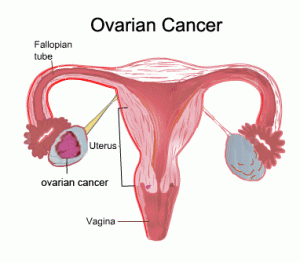What is Ovarian Cancer?
This form of cancer occurs in the tissues of the ovary (one of a pair of female reproductive glands). In most cases, ovarian cancers are either ovarian epithelial carcinomas (cancer which starts in the cells on the surface of the ovary) or malignant germ cell tumors (cancer that begins in egg cells). Most cases of ovarian cancer are epithelial.
Signs and Symptoms of Ovarian Cancer?
Ovarian cancer can be difficult to detect and is often referred to as “cancer that whispers”. Symptoms vary and many times it depends on the location of the tumor and its impact on the surrounding organs.
Research has shown that the symptoms below are the most common for Ovarian Cancer:
- Bloating (early stages)
- Abdominal or pelvic pain (early stages)
- Difficulty eating and feeling full quickly
- Urinary symptoms (urgency or frequency)
- Pain during sexual intercourse
- Irregular periods
- Constipation
- Back pain
Causes and Risk Factors of Ovarian Cancer
Many cancer specialists agree that ovarian cancer is a multi-factorial form of cancer, which means that there is more than one factor involved.
These may include:-
- Age – The majority of ovarian cancers happen after the menopause and is rare for those under 40
- A family history of cancer – Inheriting of a faulty gene
- History of breast cancer – People who have had breast cancer are twice as likely to get ovarian cancer
- Being overweight or tall
- Endometriosis
- Oestrogen/Estrogen-only HRT – This particular form of Hormone Replacement Therapy is thought to increase the risk
- Talcum powder – Using talcum powder near to the genital area is thought to increase the risk of ovarian cancer
5 Year Survival Rates
[table id=13 /]
Recommended Therapies for Ovarian Cancer
For further information on available therapies, please see our home-based cancer care program.
